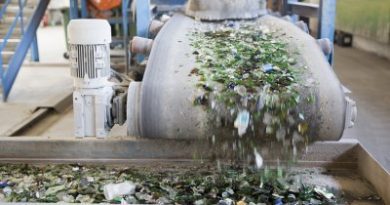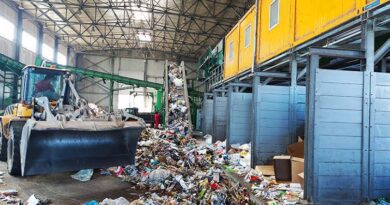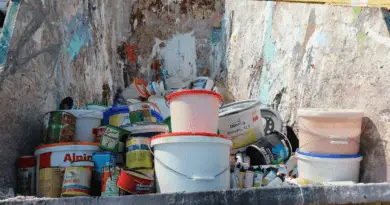Wastewater Treatment Options
The required treatment is determined by the influent characteristics, the effluent requirements, and the treatment processes that produce an acceptable effluent.
Influent characteristics are determined by laboratory testing of samples from the waste stream or from a similar waste stream, or are predicted on the basis of standard waste streams.
Effluent quality requirements are set by Federal, Interstate, State, and Local regulatory agencies. Treatment processes are selected according to influent-effluent constraints and technical and economic considerations.
Treating Biodegradable Wastewaters
Biodegradable wastewaters can come from domestic, institutional, commercial outfits and also from industries (especially industries dealing in food, beverages, including beer, starch, flavouring, soft drinks, flour and grain milling, meat/poultry/fish products, fruit juices, cocoa/chocolate/confectionery, sugar distillery, etc).
All things being equal, these wastewaters can be treated by biological means whereby action of microorganisms is used under suitably controlled conditions to break down the waste. Microorganisms can break down wastewater solids under aerobic or anaerobic conditions. Aerobic systems, biodegradable wastewater solids are converted, in the presence of adequate oxygen into bacterial cells:
WastewaterSolids+Oxygenbacteria Oxidizedwastes+NewBacteriaCells
Biological systems available for treating biodegradable wastewaters, from the crudest to the most modern may be listed as follows:
Latrine (individual household use)
Bushrine (pronounced as lat-rine)
Septic tank and soak-away system
Trickling filters
Activated sludge
Lagoons
Most of these have been discussed earlier. Please try to read the unit again if you have forgotten them.
Read Also : Wastewater Treatment and Guideline Standards
Treating Non-Biodegradable Wastewaters
Wastes that are non-biodegradable or that are outright toxic may not be amenable to treatment by any of the biological system earlier described. Examples of such wastewaters are those from textiles, lead – acid battery manufacturing, paint, printing, etc.
Each non-biodegradable wastewater is usually subjected to laboratory analysis and reliability studies before a treatment system is developed for it. Treatment of such wastes may involve a combination of the following physiochemical system:
pH adjustment
Aeration
Chlorination (bleaching action)
Coagulation/flocculation (alum with mixing action)
Sedimentation
Centrifugation
Flotation
Filtration (using activated carbon and / or sand over gravel).
Table 11 illustrates the applicable processes and the possible performance of most of the available techniques. All the identified methods will be used for guidance in selecting a process chain of treatment units, which applies directly to the selection of treatment processes.
Generally, wastewater techniques are classified under the following sub
– Headings in the table as follows (see also Figure 12):
Preliminary Treatment
Preliminary treatment is defined as any physical or chemical process at the wastewater treatment plant that precedes primary treatment. Its function is mainly to protect subsequent treatment units and to minimize operational problems.
Read Also : Issues in Wastewater Reuse and Recycling, and the Future of Water Reuse
Pre-treatment at the source to render a wastewater acceptable at the domestic wastewater treatment facility is not included.
Primary Treatment
Primary treatment is defined as physical or, at times, chemical treatment for the removal of settleable and floatable materials.
Secondary Treatment
Secondary wastewater treatment is defined as processes which use biological and, at times, chemical treatment to accomplish substantial removal of dissolved organics and colloidal materials.
Land treatment can be classified as secondary treatment only for isolated locations with restricted access and when limited to crops which are not for direct human consumption.
Advanced Wastewater Treatment
Advanced wastewater treatment is defined as that required to achieve pollutant reductions by methods other than those used in conventional treatment (sedimentation, activated sludge, trickling filter, etc.).
Advanced treatment employs a number of different unit operations, including ponds, post-aeration, micro straining, filtration, carbon adsorption, membrane solids separation, and specific treatment processes such as phosphorus and nitrogen removal.
Advanced wastewater treatment is capable of very high effectiveness and is used when necessary to meet strict effluent standards.
Organics and suspended solids removal of over 90 percent is obtainable using various combinations of conventional and advanced wastewater treatment processes.
Phosphorus levels of less than 1 milligram per liter and total nitrogen levels of 5.0 milligrams per liter or less can also be reached through advanced treatment.
Table 11: Wastewater Treatment Methods, their Applications and Efficiency
| Treatment Process | Application | Advantages and Capabilities | Disadvantages and Limitations |
| Preliminary | |||
| a. Equalization | Wastewaters with high variability | Dampers waste variation Reduces chemical requirements Dampens peak flows, reduces treatment plant sites | Need large areas Possible septicity, requiring mixing and/or aeration equipment |
| b. Neutralisation | Wastewaters with extreme pH values | Provides the proper conditions for biological, physical and chemical treatment | May generate solids |
| c. Temperature adjustment | Waste streams with extreme temperatures | Provides the proper conditions for biological treatment | High initial equipment costs |
| d. Nutrient addition | Nutrient deficient wastes | Optimizes biological treatment | Possible septicity, requiring mixing and/ or aeration equipment |
| e. Screening | Waste streams containing large solids (wool, rags, etc) | Prevents pump and pipe clogging Reduces subsequent solids handling | Maintenance required to prevent screen plugging, ineffective for sticky solids |
| f. Grit removal | Wastewaters containing significant amounts of large, heavy solids | Lowers maintenance costs, erosion | Solids to be disposed of are sometimes offensive |
| PrimaryTreatment | |||
| a. Sedimentation | Wastewaters containing settle able suspended solids | Reduces inorganic and organic solid loadings to subsequent biological units By far the least expensive and most common method of solid – liquid separation Suitable for treatment of wide variety of wastes Requires a simpler equipment and operation Demonstrated reliability as a treatment process | Possible septicity and odours Adversely affected by variations in the nature of the waste Moderately large area requirement |
| b. Dissolved-air floatation | Wastewaters containing oils, fats, suspended solids and other floatable matter. Can be used for either clarification or thickening | Removes oils, greases and suspended solids Less tank areas than for a sedimentation tank Higher concentration of solids than for sedimentation Satisfies immediate oxygen demand. Maintenance aerobic conditions | High initial equipment costs Sophisticated equipment and instrumentation High power and maintenance cost |
| b. Aerated Pond (with secondary sedimentation) | Biologically treatable organic wastes | Flexible – can adapt to minor pH, organic and temperature changes Inexpensive construction Requires minimum attention Moderate effluent (80 – 90% BOD Removal) | Dispersed solids in effluent Affected by seasonal temperature variations Operating problems Moderate power costs Large area required No colour reduction |
| c. Aerobic Anaerobic Ponds | Biologically treatable organic wastes | Low construction costs Non–skilled operation Moderate quality (80–95% BOD Removal) Removes some nutrients from wastewaters | Large land are a required Algae in effluent Possible septicity and odors Weed growth, mosquito and insect problems |
| d. Trickling filter | Biologically treatable organic wastes | Moderate quality effluent (80 – 90% BOD Removal) Moderate operating costs (lower than activated sludge and higher than oxidation pond) Good resistance to shock loads | Clogging of distributors or beds Snail, mosquito and insect problems |
| e. Chemical oxidation | Low flow, high concentration wastes of known and consistent waste composition, or removal of refractory compounds | Disinfects effluent Aids grease removal Removes taste and odour Removes organics without producing a residual waste concentrate | Chemical costs High initial equipment costs Skilled operations Requires handling of hazardous chemicals |
| mixing flocculation and clarification | high in dissolved solids, colloids, metals, or perceptible inorganic and waste containing emulsified oils. | ions, nutrients, colloids, dissolved salts Recovery of valuable materials Provides proper conditions for biological treatment | equipment and instrumentation Residual salts in effluent Produces considerable sludge |
| g. Gravity filtration | Wastewaters with organic or inorganic suspended solids, emulsions, colloids | Breaks emulsions Removes suspended solids | Clogging Frequent backwashing High pressure costs |
| h. Pressure filtration | Wastewater high in suspended solids (i.e. sludge, organic solids) | High solids removal (190 – 95%) | High pressure coasts Clogging High pressure drop (power costs) |
| i. Dissolved air floatation with chemicals | Wastewaters containing oils, fats, colloids and chemically coalesced materials | Produces high degree of treatment Removes oils, greases | High initial equipment costs High operation cost Sophisticated instrumentation |
| j. Anaerobic contact | Wastewaters with high BOD and/or high temperature | Methane recovery Small area required Volatile solids destruction | Heat required Effluent in reduced chemical form requires further treatment Requires skilled operation |
| Advanced Wastewater Treatment | ||||
| odour producing compounds | compounds Reduces colour | No inorganic removal Wastes must be solid free to prevent c logging Air pollution potential when regenerating activated carbon Limited throughput | ||
| b. Micro straining filtration | Tertiary treatment | Up to 89% of suspended solids removed Can produce final effluent of solids less than 10mg/L | Very sensitive to solids overloading Requires automatic controls, absorbent techniques | |
| c. Land treatment | Biologically treatable wastes with low to moderate amounts of toxic substances | Inexpensive Minimum operator attention, minimum sludge Waste conservation Crop production Very high quality effluent and/or in discharge | Large land area required Possible contamination of potable aquifers Freezing in winter Odours in summer under some conditions, usually of minor concern | |
| d. Subsurface disposal (e.g. deep well injection) | Solids free, concentrated wastewaters | Disposal of in organics and organics Ultimate disposal of toxic or odorous material | Subsurface clogging Groundwater pollution High maintenance and operation costs Limited aquifer life High initial costs | |
| e. Groundwat er recharge | Treated wastewaters | Reduces bacteria concentration Conserves water resources Prevents salt water intrusion into potable aquifers | Possible groundwater contamination Limited to porous formation |
Source: Department oftheArmyAirForce Manual and theAir Force (1988) Domestic Wastewater Treatment, Vol. 3, pages 17 –30.

Fig. 12: An Overview of a Wastewater Treatment Facility for a Municipality



